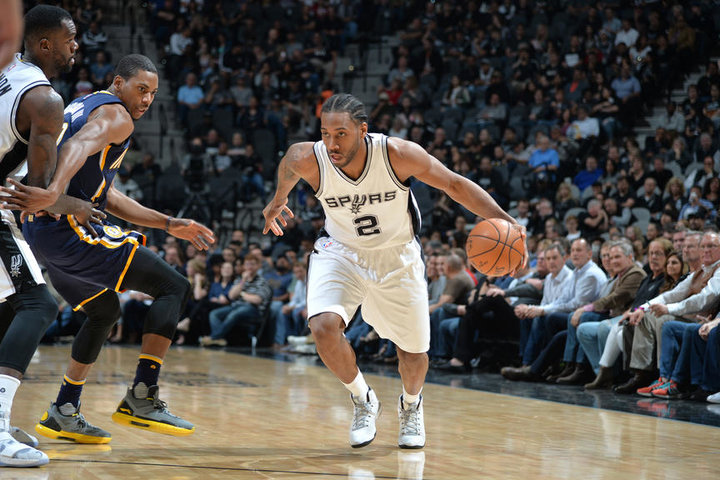It’s no secret that the San Antonio Spurs play slow. This season, they rank 27th in the league in pace at 96.56 possessions per game, a lower rank but faster pace than last year’s 26th ranking and 95.7 possessions per game. While they played up-tempo relative to the league for several years at the beginning of the 2010 decade, since the days of Tim Duncan and David Robinson, the Spurs generally have played slow, meticulous basketball. If the philosophy of the mid-2000’s Phoenix Suns was to shoot before the defense is set, then the Spurs’ philosophy has be to run actions until the defense shows a weakness and to not shoot until there is a high-percentage shot to take.
Playing at a slow pace naturally benefits the Spurs for several reasons. The Spurs give their opponents an average of 21.1 free throw attempts per game, force opponents into 14.6 turnovers per game, and hold opponents to a 44.2% field goal percentage per game. These stats, in which the Spurs rank 7th, 11th, and 3rd in the league respectively, show how the Spurs not only limit the value of opponents’ possessions, but also limit the possessions that opponents have. When playing with fewer possessions, every mistake is magnified, and the Spurs’ defense is built around forcing more mistakes and capitalizing on these mistakes when they occur.
The benefits that the Spurs gain by playing slow can also expose their own mistakes. On the season as a whole, the Spurs’ pace in wins and losses differs by 0.01. Rather, their offensive and defensive rating are much worse in losses, going from a net rating of +13.4 points per 100 possessions in wins to -8.9 points per 100 possession in losses. When playing slowly, it becomes more difficult for the Spurs to overcome a scoring deficit, especially if the Spurs are struggling to get the ball in the basket that particular night. This can be manifested in the scoring droughts that the Spurs have seemingly become accustomed to in recent months.
Not every lineup the Spurs put on the court plays this style, however. In particular, the second unit contains the top 3 players in pace for the season. Lineups that contain Manu Ginobili average a faster pace than any other players’ average pace at 101.7 possessions per game. Patty Mills and David Lee rank 2nd and 3rd in pace, respectively. While the bench does have great on-court chemistry, that chemistry is not the only reason why the Spurs will often go on quick scoring runs when they check in. All three of those players are skilled offensively and the pace at which they play gives the Spurs more opportunities to make offensive plays. The starting unit, however, has the three players that rank the lowest in pace on the Spurs in Tony Parker, LaMarcus Aldridge, and Danny Green. When the starters’ offense stagnates, the bench’s contrasting pace often provides a solution.
While it can also expose the Spurs on their poorer shooting nights, pace is overall a tool that the Spurs can use to gain better control of a game. The Spurs know that playing against the Golden State Warriors or Houston Rockets, who rank 4th and 3rd in pace respectively, at their pace only feeds into their strengths, meaning that the Spurs will have to impose a slower pace in any potential playoff match-ups against either team.
All stats from nba.com/stats
Add The Sports Daily to your Google News Feed!
